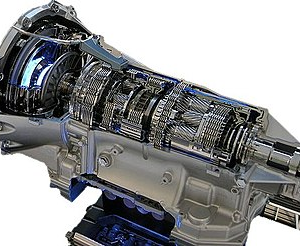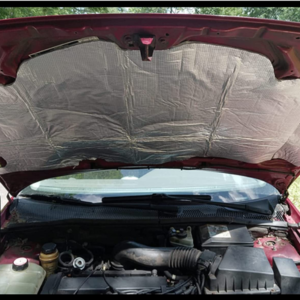Being a car owner takes accountability. Driving and owning a car may be a privilege, but without the right maintenance, you could end up with very pricey expenses. Despite the fact that maintenance is a fairly complicated subject, here are 10 reminders. Even though we have a detailed guide on general auto care, this is more general advice and pointers that are simple to implement and crucial to note.
Maintaining your vehicle regularly keeps it running efficiently and smoothly and might help you avoid problems and even fatalities. You may perform some of these procedures on your own, while others call for taking your automobile to the technician for routine auto care and proper maintenance. You may find information about how frequently regular maintenance is required and how frequently your car has to be inspected in the manufacturer’s guidebook. To keep your car in top condition, follow this maintenance advice.
01. Keep The Tires in good condition

It’s important and crucial to keep your tires in good shape for more reasons than just vehicle upkeep. Your safety and the safety of those you love are dangerously threatened by worn-out tires. The following are some tire maintenance tips to keep in mind: Check for any lumps, bumps, or bald spots in your tires as you check the tread on them on a regular basis. Immediately change the tire if you notice any of these warning signs. Unbalanced wear on a tire is a sign that the wheels need to be realigned. Get the wheels correctly aligned as early as possible.
Also, check the spare tire. It’s easy to overlook the spare tire that’s stowed in the trunk of your car. If you find yourself needing to change a flat, make sure it’s still functional by checking it at least once a month. Check your tires’ pressure at least once each month. Your fuel economy will suffer, and you’ll spend more money with underinflated tires. Rotate your tires at an interval of 5,000–8,000 miles.
02. Give your vehicle the proper fuel

The lowest research octane number for regular gasoline, or the lowest research octane number for diesel, that your car’s engine can tolerate can be found in your manual or on the inside of your gas flap. The majority of passenger cars, such as the Toyota, Honda, and Ford, can run on 91 RON gasoline, while better fuels are advised for high-performance cars like the Toyota. Make sure you fill up with the minimum amount of fuel, or better yet, if your automobile requires premium fuel. Even if you use more premium fuel, your automobile might not perform noticeably better. At most, there might be a small difference.
03. Check the break

To perform a quick inspection of your car’s braking system, follow these instructions. If you hear a squeaking sound when you press the brakes, your brake pads may be wearing out. If so, assess and visually inspect it. Make certain that your pads are still thick. People tend to run on paper-thin pads all too frequently. Your rotors may be distorted if you experience a car swaying while applying the brakes. Inspect your rotors in either scenario. If you can’t feel the brake pedal and it’s soft, your fluid level or master cylinder may be low.
04. Tire or Wheel Alignment

Regular tire alignment has several significant benefits, according to Bridgestone, yet most automobile owners frequently overlook it. You’ll benefit from enhanced safety, smoother riding, and better fuel economy after having your wheels aligned, to name a few advantages. When do you, therefore, recognize the necessity for tire alignment? Watch out for these warning signs: Erratic tread wear. Vehicle pulling to the left or right. When traveling straight, the steering wheel is not in the middle. The steering wheel shook slightly.
05. Inspect the tire pressure

Maintaining proper tire pressure in your car will help you save money on gas and even some of your energy. Your engine will use more gasoline and your steering will become slightly heavier if you have a tire that is either underinflated or overinflated. It may be time to check for air leaks and punctures if you frequently fill your tires with air. Running a tire that is underinflated can potentially cause permanent sidewall damage and even affect how your steering wheel is aligned.
On a label from the inside of the driver’s door, you can normally find the appropriate tire pressure for your car. It is typically listed in the owner’s manual as well. Psi is the unit of measurement for tire pressure (psi). You could also note that the tire pressure is listed on the sidewall. According to Consumer Reports, this is the legal maximum tire pressure. The recommended tire pressure for your car is indicated on the door label or owner’s manual, so stick with it.
06. Keep the car spotless and clean
Keep your automobile clean if you want it to look like a well maintained vehicle. Clean it thoroughly with microfiber towels and auto shampoo. Use the two-bucket technique, and thereafter protect the paint by using wax or another sealant. Furthermore, it is essential to check that your inside is tidy and maintained. You’ll be driving for a long time, and it won’t be comfortable to sit on garbage that has been lying about for a month. The presence of trash in your automobile is an open invitation for other species to set up residence there. Clean up the garbage, vacuum every surface, and sanitize as necessary.
07. Check the Battery

According to J.D. Power, a low or dead battery is the cause of your automobile not starting. Sadly, most car owners don’t check their batteries until they break out. The recommended best practice is to frequently monitor the voltage of a car battery using a multimeter—at least twice annually—as preventative maintenance. Locate the car’s battery (see the owner’s manual for directions) and check the positive and negative connections for debris or corrosion. A “plus” sign and a red cover are often worn by the positive terminal, while a “minus” sign and a black cover are typically worn by the negative terminal. Corrosive buildup should be removed using fine-grit sandpaper because it can prevent the multimeter from reading voltages accurately. Gloves must be worn.
Regular testing of your battery and electrical system is crucial; do not wait until they start to show signs of weakness. It will help lower your risk of failure if you proactively test it twice a year (or make sure your mechanic does). Most shops provide a quick, free battery test that lasts for five minutes. Use our Find a Retailer tool to find a store near you where you can get a free battery test. When you try to start your car, you find that the headlights and engine won’t turn on. That indicates that the battery needs to be checked. Unsure about how? Don’t worry; this article will guide you through the process of testing your car battery with a voltmeter or a power probe, step by step. In the absence of either of those, we’ll also demonstrate how to test the battery by starting the engine.
08. Check the Lights

You can check your own headlights because it’s not too difficult. Start your automobile, then turn on your headlights. Check the lights at the front of the car by walking around it. Both must be intelligent. Driving with a light out will almost certainly result in a fine. There are several lights that must be present on every vehicle, including headlights, taillights, indicator lights, and number plate lamps. These lights guarantee that operating your car is secure. When they are malfunctioning, you run the risk of losing your ability to see the road and the ability of other drivers to see you.
It could be necessary to change a bulb if it is getting dimmer or more yellow. For two reasons, it’s preferable to replace both bulbs at once. First off, it’s likely that the other bulb will blow soon after the first one does. Second, switching out both bulbs will guarantee a precise color and beam pattern match, especially with xenon HID. If changing the bulb doesn’t fix the issue, a bad connection is probably to blame. Wait until it is dark, then park your car facing a wall on a level surface to make sure your lights are functioning as they should. Check the light your headlights emit by turning them on. The lights should be similarly bright on both sides, and the spacing should be even.
How to test the functionality of your headlights and taillights. Turning on the engine and leaving the handbrake on is the simplest way to see if your lights are functioning. After that, turn on each light and circle the vehicle to verify each one in person. You should have your headlights checked if they seem dimmer than usual or if you notice them fading and brightening while you’re driving. There are a number of distinct issues that might lead to dimmed headlights, and none of them should be disregarded. One of the most frequent causes of dimming headlights is a corroded ground wire.





